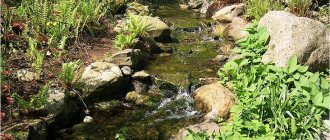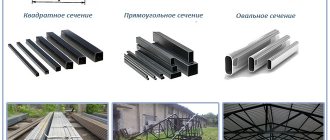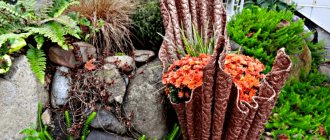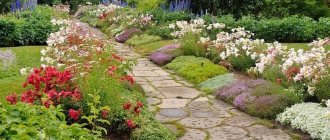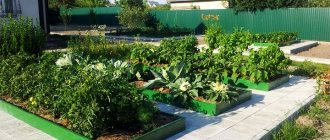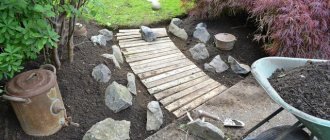Among all the styles of landscape design, the classic one is the most traditional, that’s why it’s called that. This style has its own characteristics that distinguish it from other related styles, and especially more modern ones.
First of all, it is characterized by deliberate orderliness and emphasized “geometrization” of design.
Its distinctive features are simplicity and severity of lines combined with symmetry. These features determined other names for this style: formal, regular, conservative.
Philosophy of garden interior
Gardens in Asian countries are created for peace, tranquility and encourage those who enter them to relax. That is why the plants used for decoration must remain in the same color scheme, and the basis of the garden interior is made up of all shades of green. In the vastness of such a garden, variegated varieties and forms are used extremely carefully, especially when it comes to the Japanese direction.
Classics of Japanese gardens claim that the strictest connoisseurs do not allow even rhododendrons to bloom; their buds are pedantically removed every year. After all, flowers are present only as an addition to some element of the garden, as an accent that enhances the impression. This does not mean that such a garden is boring and monotonous. On the contrary, the symphony of greenery and stones, the gentle murmur of water and the rustle of the wind playing with ornamental grains are perfect for meditative tea drinking after a busy day at work.
The creations of Asian gardeners are distinguished by their elegant simplicity and laconic assortment of plants. And at the same time, extreme neatness and cleanliness of the plantings. These main factors should be the first when choosing an assortment. That is, crops and forms must be combined with each other all year round and be stable in the climate of your region.
Expert advice
There is no need to try to adapt complex heat-loving species to your region, because the beauty of any garden is achieved only when it is formed, and its inhabitants appear before you in all their beauty at any time of the year.
The second point is philosophy, the idea of a garden. It is not enough to arrange the stones beautifully and select truly Chinese or Japanese varieties; it is necessary that they reflect your idea and be part of the whole picture. In such a garden, the Eastern culture of the selected plant fades into the background, subordinating to the general movement.
Scale
The regular style was mainly used to decorate the grounds of castles, palaces and castles, which can hardly be called modest. Therefore, such gardens are traditionally associated with scale. They are intended primarily for long walks, so that new views constantly appear before your eyes and picturesque scenes alternate. It is quite difficult to organize this in a small area, and besides, numerous decorative elements will become cluttered and therefore burden the space.
In addition, a mandatory requirement for implementing a regular style when decorating a garden is a flat, level area, without the presence of relief irregularities. And this requires thorough excavation work.
Coniferous base of the garden in oriental style
Especially for those who want to follow the letter of Asian garden culture, we will dwell in more detail on the main representatives of the East among planting materials. Let's start with the tree group that forms the skeleton of the garden.
For structure, choose coniferous species that are resistant to your climate, especially pine trees. For the East, and primarily Japan, pine is a symbol of longevity, courage, masculinity, and strong character. This could be a species of Scots pine (Pinus sylvestris), whose crown has been pinched and shaped since childhood, or an old, gnarled tree, bent by bad weather and winds. Also suitable are the fluffy varieties of mountain pine (Pinus mucio), Weymouth pine (Pinus strobes) and cedar pine (P. cembra), as well as dwarf pine or dwarf pine (Pinus pumild). Their compact size and high frost resistance make them an excellent planting material for domestic garden compositions in oriental style.
The main thing is that the final dimensions of the tree or shrub fit harmoniously into the overall structure and do not disrupt the overall picture of perception. By the way, it was the need to fit a large tree into a small garden format, while giving the plant a shape given by nature, that became the reason for the development of the pinching technique, so popular in Asian gardens.
In addition to pine trees, you can use Japanese larch (Larix leptolepis) and Korean fir (Abies koreana). Among the tall varieties of western thuja (Thuja occidentalis), the easiest to work with is the Smaragd cultivar. It is distinguished by its compact growth form and consistent needle color. Other verticals will help create tall species and varieties of juniper. When using tall conifers, do not forget to protect the crowns from snow breaks in winter. To do this, be sure to tie them in a spiral with twine so that the plantings retain their appearance in the spring.
As low-growing cultivars, it is possible to use spreading species of juniper, for example, Cossack juniper (Junipcrus sabina) or M. scaly [Ju. squamala). You should choose varieties of Chinese I. (Ju. chinensis) with great caution, since most of them have the unpleasant feature of noticeably turning yellow after winter, which greatly spoils the appearance of the entire composition. More resistant are pea cypress (Chamaecyparis pisifera), dwarf cultivars of thuja, such as Teddy or 'Danica', cushion spruce (Picea), hemlock (Tsuga canadiens) and microbiotadecussata.
Recommendations
A garden in a regular style, as you know, should have a large area. However, some elements of this type of landscape design can be used in small areas. For example, a regular style of the site can be achieved by creating flower beds decorated with trimmed shrubs. They do not require a large space, but bushes arranged symmetrically will influence the style of the garden.
If there is a gazebo on the site, then it is recommended to use forged metal or even wooden decorative carved elements in its design. Similar fragments would be appropriate for fences. A good option as an element of a regular style on the site would be a cast fence, executed in a classic, strict manner.
Deciduous favorites of the Japanese garden
Among deciduous species, plants that grow slowly or that hold their shape also lend themselves well to shaping. So, for example. Old bushes of common hawthorn (Crataegus oxyacantha) look very beautiful. It lends itself well to pruning, its flexible branches can be set in the desired direction of growth, and over time the trunk takes on the appearance of a knotty, twisted old tree. Ornamental apple trees have similar features. Niedzwiecki Malus niedzwelzkyana,. I. decorative Royalty, resistant species of cherry (Cerasus), plum (Prunus) and damson (Prunus domestica subsp. insititia), and for many regions such a tree can be staghorn sumac (Rhus typhina), blazing with a bright red bonfire every autumn.
The only important drawback of the deciduous trees listed above is their tendency to produce wild growth, which must be constantly fought against. A number of shrubs are also distinguished by this, for example, the resilient Chaenomeles maulei, also known as Japanese quince, and, in addition, the steppe almond (Amygdalus nana), which is often called Russian sakura for its abundant flowering.
More stable and requiring less care, and most importantly, they maintain their size well, are the varieties of spirea Vanhouttei (Spiraea x vanhouttei), p. Japanese (S. japonica), as well as p. gray (S. x cinerea). These plants are stable, take well to shaping and tolerate even heavy partial shade in the garden. Speaking of shrubs, choose climate-resistant plants such as Berberis thunborqii, Mahonia aquifolium, and elderberry species and varieties. For example, red elderberry (Sambucus racemosa), variety b. black (S. nigra) 'Black lace' or b. black dissected (S. Nigra f. lacinia ta). Their carved, feathery leaves will successfully replace the fan maple in the design of an eastern garden, which often does not live up to the expectations placed on it.
Colonial Landscape Design
Colonial style dates back to the time when Europeans arrived in America and had to re-adapt not only to a new way of life, but also to a different climate. The style combines two different cultures: the colonialists and the aborigines.
The diversity of local flora and the multinationality of the colonialists led to a striking style, which is characterized by comfort and slight carelessness. Characteristic elements of a colonial garden: clear zoning, stone paving stones, sundials, fountains, symmetrical straight gravel paths between flowerbeds, a low white fence.
The obligatory gardening part of the site in the colonial style is an echo of how the first settlers, in addition to the decorative purpose, also attached practical significance to the garden.
Star of the Eastern Garden
However, the true star of the eastern garden will be the species and cultivars of rhododendrons. Evergreen representatives of this group of shrubs are Katevbinsky rhododendron (Rhododendron catawbiense), p. short-fruited (Rh. brachycarpum), b. Smirnova (Rh. smirnowii) - will create a stable green group throughout the season. Their folded leaves dusted with November snow are extremely beautiful against the background of a monotonous white carpet. In turn, deciduous species and varieties are hybrids of the Knap Hill series, p. yellow (Rh. luteum), p. Japanese (Rh. japonicum) - distinguished by early flowering. They will create an elegant airy structure of the garden.
Expert advice
When using rhododendrons in the Oriental garden, choose only proven species and don't be afraid to prune fresh shoots after flowering to maintain the overall shape of the bush.
Dutch style
This style is directly correlated with the nature of Holland and its landscape. The Dutch were forced to conquer every piece of land from the sea, so their gardens are very small.
This style is associated with tulips, mills and canals. Essential features of the Dutch style are careful zoning.
In addition, ordinary trees are replaced with dwarf trees, perfect order is maintained on the territory, every square meter of the site is used to the maximum. Bright color accents, original garden figures and art objects are also used to decorate the garden.
Perennials for decorating an oriental garden
Having created a frame of plants, one cannot neglect perennial herbaceous crops, which also play an important role in the life of the eastern garden. Everyone knows the popular and beloved peonies (Paeonia) and chrysanthemums (Chrysanthemum) in Asian countries. Along with them, you can use such textured plants as hosts (Hosta), Siberian irises (Iris sibirica), astilbe (Astilbe), daylilies (Hemerocallis) and Rogers (Rodgersia), black cohosh (Cimicifuga), bergenia (Bergenia), various fern cultures (Polypodiophyta). At the same time, you should not get carried away with the choice of varieties and the beauty of color. Rely on species forms, whose beauty will be revealed in the graceful simplicity of the leaves.
Separately, it is worth mentioning the cereal crops that have become popular in domestic gardens. The key plants of this group will be Chinese miscanthus (Miscanthus sinensis) with discreet foliage color. In partial shade you can plant strict forms of blue molinia (Molinia caerulea), gray sedge (Carex grayi), and twisted pike (Deschampsia flexuosa). For light and open areas, switchgrass (Panicum virgatum), various grass grass (Luzula), gray fescue (Festuca glauca) and many others are suitable.
MINIATURES IN FASHION
Groundcover lovers can create a small garden of mosses and creepers. Suitable plants in open areas include alpine armeria ( Armeria
alpina), loosestrife ( Lysimachia nummularia), bryozoan ( Sagina subulata), which can create the illusion of a real moss garden, as well as creeping sedum ( Sedum) and wall cymbalaria ( Cymbalaria muralis) . For partial shade, periwinkles ( Vinca), European hoofweed ( Asarum europaeum), and apical pachysandra ( Pachysandra terminalis) are suitable.
Moorish style
The garden in this style is closed from prying eyes. This is the rightful heir to the Hanging Gardens of Babylon. Hidden behind high walls, this exotic oasis is filled with oriental luxury, bright colors, sweet aromas, lush greenery and fountain water sparkling in the sun.
The Moorish garden amazes with its pristine beauty; it seems to invite you to enjoy life and continuous pleasures. The geometric regularity of the landscape is combined with a large amount of vegetation. The paths are lined with ceramic tiles, the exterior decoration is fruit trees and roses with a thick, exciting aroma.
The center of the garden is a pond or fountain. The presence of a patio is a charming feature of the Moorish garden. Other important elements of this concept include wrought iron elements, wall fountains made of mosaic tiles, benches and tables covered with mosaic tiles.
DIY Japanese-style garden
Traditional Japanese gardens are a universe contained in one small area. everything here is symbolic and has a deep meaning with external restraint and simplicity. This is why it is so difficult to create Japanese-style garden objects. Difficult, but interesting!
Creating a Japanese-style garden is the dream of many people seeking harmony in their soul. There are different styles, and these are not just meditation gardens made of gravel and stones, as it seems to those who have only seen photographs of the famous Reanji gravel garden. Created in the 1400s in Kyoto, it is a 23 x 9 m rectangular area of white gravel with 15 stones arranged in five groups. Its simplicity and mysterious understatement are contemplated from the terrace of the abbot’s house.
One of the most famous Japanese gardens in Europe is considered to be the water garden of Claude Monet, who was not in Japan, but read a lot about the traditions, art and philosophy of this country, and was fond of Japanese prints.
There are no characteristic lanterns in his garden, but there is a play of light and shadow, the unsteadiness of reflections, and the subtly changing color of the water. From the bridge, entwined with white and purple wisteria, one of the best views of the nymphs in the pond, which the artist painted all his life, opens. There are Japanese gardens in all countries of the world. There are quite a few of them in the UK, my favorite is the Kyoto Garden in Holland Park, made by Japanese craftsmen in 1991. A real masterpiece with ponds, waterfalls and a magical atmosphere!
Pavilions
An eastern garden or park is impossible without architectural structures that represent a person. These can be structures of various sizes: pavilions and gazebos, long covered courtyards or tiled galleries, houses for drinking tea and playing music, offices and towers, residential buildings and terraces that allow you to admire the park in any weather. However, there are no deliberate combinations or compositions in the garden space. Everything is subordinated to the idea of contemplation from any point. It is always important that what is created by man is in unity with nature, in accordance with it, with the landscape. It should fit logically and not be an accent.
"Our" Japan
Is it worth setting up a Japanese garden in central Russia? If your usual pastime is on weekends and holidays
at the dacha means an abundance of friends and relatives, songs and barbecues, this is wonderful, but then a Japanese garden is not for you. The ascetic Japanese gazebo is not intended for barbecuing and feasts. A Japanese garden is created for contemplation.
Also, this idea should be abandoned by enthusiastic flower growers and lovers of bright colors. In Japanese gardens, the dominant color is green; they are colored only by the cherry blossoms in spring and the bright foliage of maples in autumn. Of course, there are azaleas, wisterias, the newer ones are very sporadic. There are practically no perennials in such gardens, only trees and shrubs. As they say, lovers of phlox and roses, please do not worry. For a European gardener, the main thing in the garden is the plants, no matter whether they are clipped (for a regular style) or free-growing (for compositions in a landscape style). The Japanese have different priorities - in their walking gardens they created an idealized natural landscape with mountains, lakes, and trees. A world in miniature, in which all the elements of nature are present - stones, water, vegetation. Please note: plants come last!
The history of the classical style
The history of the classical style used in landscape design originates in Ancient Rome. The gardens of noble Roman citizens were decorated with “green sculptures” of trees and regularly shaped flower beds. For this purpose, the patricians had specially trained slave gardeners as servants.
The classical style found new life during the Renaissance, and over the next few centuries it enjoyed enormous popularity.
The most famous palace parks in Europe are decorated in this style, for example, the park of the Sanssouci Palace in Potsdam, the park of the Schönbrunn Palace in Vienna. The famous Versailles gardens are considered its ideal example.
In Russia, a classic example of the embodiment of the regular style are garden and park ensembles in the vicinity of St. Petersburg.What plants are planted in a Japanese garden?
The mesmerizing autumn colors are due to the graceful leaves of maples. Instead of the Japanese species that are problematic in our country, choose Manchurian and False-Bolds, which are stable in the middle zone, with carved small leaves, orange and purple in the fall.
It is impossible to imagine Japanese spring without sakura, which does not do well in the Moscow region. So let's replace it with Sakhalin cherries, c. Kuril or V. common, hawthorns, even ornamental or fruit apple and plum trees. Their lush bloom, although not authentic, is more interesting than several flowers of real cherry blossoms that are clearly suffering here.
The Japanese use small-leaved azalea as sheared hemispherical bushes; you can try it for this purpose, but it is easier and cheaper to make such haircuts from Boumalda spirea and Japanese spirea.
Parterre
A garden in a regular style has an obligatory element: a parterre - a single ceremonial composition consisting of flower beds, lawns and a pond. He is the face of the garden. A real front parterre should occupy a large space, so that the entire composition can be seen only from the top floor of the house. However, today simple options have become widespread, which are often performed next to private houses or cottages. We are talking about a well-groomed lawn of regular shape, limited around the perimeter by a border or green flower beds.
Source of inspiration
For those who would like to create a Japanese garden, the gardens of Tofuku-ji can serve as a source of inspiration. By Japanese standards, they are indecently young, created in 1939 in Kyoto by the Japanese Shigemori Mirai, who believed that the true path is not blindly copying ideal samples, but creating your own style. Four different gardens appear before us one after another as we move along the wooden gallery around the temple.
The southern garden consists of four groups of stones and boulders, embedded in a sea of gravel, symbolizing the islands of bliss. Stones of different sizes - lying on their sides, horizontal and vertical in the form of sharp peaks - create a feeling of movement frozen in a moment. On the right side of this garden are five gentle hills covered with green moss, symbolizing the main Zen monasteries of Kyoto; in spring these hills are not green, but red. The expression of the garden is amazing. The initial data is similar to what can be seen in the rock garden in Reanji - a small rectangular gravel area on which stones are placed, but this garden seems to pulsate with energy.
The minimalism of the four Tofuku-ji gardens is stunning. Each is filled with deep symbolism and philosophy, but even for someone completely distant from this person, they create a feeling of harmony and absolute peace. Nothing but rocks, gravel, moss and bushes. So simple - and so expressive!
The Eastern Garden is seven gray cylindrical stones of different heights, placed like stars in the constellation Ursa Major. They were originally used as foundation stones in various temple buildings. Western garden - clipped rectangular parallelepipeds of azaleas alternate with gravel like squares on a chessboard. The Northern Garden is especially good - a rectangular area on which squares of moss and stone tiles alternate in a checkerboard pattern. The moss closes in more and more tightly and gradually absorbs the stone squares. Along the edges of the site there are hemispheres of clipped small-leaved azaleas.
One of the classic types of Japanese gardens is a hilly one, which can be large or small, but in its center there is always a pond with an island connected to the land by a bridge.
Plants and materials used
If possible, the decorative effect of a regular garden should be maintained all year round. Therefore, experts give preference to evergreen plants. Liana or ivy is most often used to create picturesque vaults. Monogardens that consist of only one type of plant, for example, rose gardens, sirenariums or iridariums, fit perfectly into the regular style. As a rule, in such a garden it is customary to use plants with decorative foliage. Another selection criterion is the longest possible flowering time.
Trees that are given interesting shapes by pruning are yew, privet, thuja, boxwood, barberry and juniper. However, experts recommend not to get carried away: it is enough to use two or three types in compositions.
The flower garden should have classic, strict forms. This type of French garden is also characterized by arabesques. Moreover, a flowerbed in a regular style should consist only of low-growing plants, for example, bright awl-shaped phlox, lobelia, coleus or ageratum.
Maximum garden care in Japanese style
The Japanese garden is demanding in care. It is necessary to promptly remove weeds and various debris such as fallen leaves, and trim the crowns of trees and shrubs 2-3 times a year. Shaping and pruning will take you a lot of time; in such a garden, pine trees growing on their own are impossible; they must be pinched. The Japanese garden is always in perfect condition; there can be no talk of slight neglect of the landscape style. So the Japanese corner is not suitable for those who are ready to look after it only from time to time, when they have a free minute or the right mood happens. The expressiveness of this style is achieved by using a minimum of details, but these are gardens with maximum care.
I hope I have scared you enough about the complexities of creating and maintaining Japanese gardens. Those who, realizing all the difficulties, have only strengthened their desire to create simplicity and harmony, multiplied by perfection, on their few acres, will never give up their dream. A few minutes of stay here will relieve nervous tension and cleanse the soul. I sincerely wish you success!
Expert advice
Try, like the great Shigemori, not to copy the creations of Japanese masters, but to use their works as a source of inspiration. Do you need stone lanterns and pagodas in your Japanese garden? In my opinion, this is not necessary, but if you decide to “make one”, even if it is not a cheap imitation; a vulgar plastic fake will not add “Japaneseness” to your creation, but will destroy its calm and contemplative atmosphere.
Mediterranean style
The style reflects Mediterranean culture and combines elegant details with elements of nature. This style is inspired by Mediterranean landscapes.
For landscaping, citrus fruits, grapes, succulents, lavender, sage, and rosemary are used. The garden is decorated with gazebos covered with climbing plants.
All details work to enhance the relaxing atmosphere. Like Mediterranean cuisine, the garden style is also a mixture of Southern Italy and the dry regions of Spain. Integral details include gravel paths, terracotta pots, ceramic tiles and a comfortable seating area.
Chinese style garden
For many centuries, China remained a closed country. It is not surprising that connoisseurs of garden art from all over the world have long been interested in Chinese gardens, since they are distinguished by great originality and originality, because they can be considered one of the most ancient on Earth.
Garden art in China has a long history. Its formation took place back in the 1st millennium BC. Over time, different types of gardens have developed in this country: imperial, temple and monastery gardens, gardens of philosophers, private gardens of nobles and wealthy citizens. Modern large-scale public gardens and parks, where the most progressive ideas of landscape design are implemented, deserve special mention.
Realizing that it is impossible to cover in one article all the diversity of manifestations of Chinese garden art, we will try to present here a generalized image of a classic private garden. Examples of such gardens have been preserved in Suzhou, Yangzhou, Nanjing, Shanghai and other cities from the Middle Ages to the present day.
Yin and yang
The design of Chinese gardens is based on deeply philosophical and religious concepts known to us as Taoism and Confucianism. The garden is a symbol of the ideal world, deified nature. In it, all components are connected to each other, holistic and harmonious. Their interaction is subject to the laws of Feng Shui - the doctrine of the influence of the natural energy of the landscape and its parts on human life and consciousness.
Creating a garden landscape in the Chinese sense is the construction of reservoirs and mountains, embodying a harmonious combination of the main natural elements - yin and yang. Therefore, gardens are built as landscapes rich in signs and symbols, in which the main
People unfamiliar with the secret meanings of the symbols on which the gardens of the Celestial Empire are built are able to appreciate the form of such a phenomenon as a Chinese garden, but not its content. Although this is already enough to form the image of the garden and preserve enthusiastic impressions of it. One can only guess how interesting the Chinese garden is for a connoisseur who knows how to comprehend its hidden meanings.
opposite elements: stone, as an image of the active masculine principle, and water - the passive feminine force of yin. They are complemented, of course, by the third main element - vegetation, but in many gardens it still seems to play a secondary role.
As a rule, Chinese gardens have an open layout; they once played a big role in the development of the landscape style of gardening in Europe. In many cases, a significant area of the garden is occupied by water spaces. A pond is often given the main place in the garden; it can be connected by channels to other ponds, thus forming a whole archipelago of islands connected by bridges. Bright fish glide in the water, lazily moving their fins, coastal plants and coastal rocks are reflected in it, and boats float on its surface.
Fencing and gates
It is customary to fence gardens, especially in China, because they are a symbol of heaven on Earth. The wall (fence) allocates a special space to the garden, and makes it “a world within the world.” From a practical point of view, this is the boundary of the estate or land holdings. It is created as part of the surrounding landscape, always built in such a way as not to destroy the terrain, but to precisely follow its folds, running up and down the slopes of the hills like a “twisting dragon.” Look at the Great Wall of China and all questions will disappear by themselves.
Neither a city nor a garden can do without a gate. They are always richly decorated and have a symbolic inscription. They may even be without walls or any kind of fencing. The gate itself is a symbol, it is a Sign, it is a level.
The meaning of stone in a Chinese garden
Many Chinese gardens abound in stone. In general, taking into account paving, slides and other elements of artificial relief, finishing of borders, banks of canals and ducts, free-standing rocks and landscape rocky groups, there is much more stone here than in European gardens. Especially prized are limestone blocks pierced with holes with a smooth surface, which are brought from the Taihu Lake area near the city of Suzhou.
The Chinese garden is intended for leisurely walks, conversations, reading and drawing, fun and friendly pastime. This is the place where you admire the surrounding landscape, beautiful stones and water, reflect on life and dream.
They are used to lay out the bizarre coastline of reservoirs, make arches and bridges, but more often they are placed in the form of sculptural compositions, sometimes directly into the water. Sometimes it seems that there is even too much stone.
There is a wide variety of examples of the use of stone in gardens. For paving paths, platforms and paths, rubble stone, rectangular stone tiles and bars of various types, tiles and pebbles are used. Flagstone and paving stones are used to lay out geometric shapes, patterns and even entire stone paintings depicting flowers, fish or birds.
Pebble paving is common in Chinese gardens. Flat or rounded stones fill the gaps between the slabs, imprinted into the cement mortar, they form a pattern on the surface of the platforms or paths. To decorate the edges of paths and platforms, as well as to construct low borders, clay tiles placed end to end are used. This material, which has a natural terracotta or grayish color, harmonizes well with stone, soil, plants and buildings in the garden, especially since the roofs of all buildings are also covered with tiles.
English style
The traditional English or landscape garden style has its roots in British culture. A site arranged in this manner is full of alluring charm.
The main task of the English style is to imitate the natural landscape. The style is characterized by asymmetry; the main features of this style are vertical gardening, a neat lawn, the absence of strict geometry, winding paths, benches made of natural materials, tall and shady trees.
A small pond with aquatic plants and a weeping willow is desirable. The style does not imply straight lines and outlines, figuratively trimmed trees and symmetrical paths. Its task is to preserve the naturalness of the plantings. Style dictates the selection of plants that grow well without direct sunlight. These are bright primroses, roses of different shades, violets, forget-me-nots, rosemary, verbena.
Chinese garden architecture
For the purpose of zoning space and for fencing in Chinese gardens, walls are built in which arches or shaped passages are left, and window openings are also cut. Their shape
can be different: rectangular, round, in the form of a flower, bowl or vase. Often they are covered with elegant openwork grilles that do not hide the space outside the fence, turning it into a kind of garden screen or trellis.
Some of the most common elements in Chinese gardens are small architectural forms. These are various pavilions and canopies with tiled roofs, covered galleries. In Chinese gardens, humpbacked bridges are often built across canals and watercourses. Reflected in the water, they symbolize the firmament or the lunar disk. A gazebo with a characteristic conical roof, installed on the shore of a pond, or a carved pergola, entwined with vines, can become the organizing center of a Chinese-style garden corner in your garden.
Seasons
The purpose of a man-made Garden in China is not limited to showing the diversity of forms and richness of color of flowering plant species. Its most important purpose is to evoke a philosophical mood in the visitor, drawing attention to the changing nature of life, and plants are signs that define the present moment, situation, mood.
There are definitely corners in the garden that are intended to be visited at different times of the year. In winter you can admire conifers (pines, junipers, flat branches), in spring - peaches, plums, apple trees, almonds. In summer there is a riot and variety of plants. Autumn is colorful with the fall foliage of maple, aspen and apricot trees.
Plants for the Chinese garden
As for the plant content of Chinese gardens, despite a certain restraint in the number of plantings, their floristic richness is very high. This is largely due to the diversity of the Far Eastern flora. The gardens become especially vibrant in the spring. At this time they are full of colors, they are festive, fun and crowded. Numerous pome and stone fruit crops bloom in white, pink, and red clouds, attracting connoisseurs of this beauty.
At the same time, magnolias, camellias and rhododendrons bloom, capable of striking the imagination. Then they are replaced by chaenomeles, peonies, naked jasmine and delightful wisteria. They are echoed by the young emerald foliage of willow, scarlet maple, Fraser photinia and domestic nandina. There is a great variety of species of ornamental trees and shrubs in solitary, group and border plantings.
In the gardens of China you can see miniature molded trees in bowls, as well as slightly larger compositions in the ground. The art of growing dwarf trees appeared here no later than the 2nd century AD, and according to some sources, even earlier. It is not known what caused the emergence of a new garden trend, whether it was the whim of the rich rulers of the Celestial Empire, or the invention of Taoist philosophers who considered miniature plants to be a container for living spirits of nature, or perhaps the lack of space in overpopulated Chinese cities.
The practice of growing tiny trees became a Chinese tradition, and in the Middle Ages this new art was learned in neighboring Japan. There this trend, known as bonsai, received such powerful development that almost throughout the world it is associated exclusively with Japanese culture and philosophy, and its Chinese roots are rarely remembered.
Nevertheless, pots with trees and shrubs, including miniature ones, with flower perennials, bamboo or cereals remain traditional accessories of Chinese gardens.
Hidden meaning
Many plants in Chinese gardens are given special, symbolic meaning. Thus, the pine tree, beloved by the Chinese, represents longevity, bamboo - perseverance, loyalty and constancy, and the plum symbolizes endurance and the rebirth of life; it can be found as a “tree of happiness” in almost every Chinese garden.
Peculiarities
This method of decorating a personal plot will be an ideal solution for those people who love symmetry and prefer to see order in everything. Regular style in landscape design implies the presence of many clear compositions, which are made in the form of ideal shapes and geometric lines. It is more suitable for large spaces. Only the presence of a large-scale territory makes it possible to demonstrate all the features of a regular or French garden.
Korean style garden
To a European, the gardens of Korea, Japan and China look more than similar to each other. In the gardening tradition of all Eastern cultures, one can find symbolic stone compositions, moss-covered landscapes, humpback bridges, pagodas and a special assortment of plants. however, just as the culture of each of these countries has its own dragon, so each of them has its own garden style
Geographically, these countries are very close, but it would be a mistake to assume that the intracultural trends among the peoples are also the same. Moreover, even the climatic conditions of these countries differ markedly, which also leaves an imprint on the styles of garden art. Thus, Japanese gardens are distinguished by a carefully thought-out effect on the viewer. As a rule, they have a complex natural architecture, each tree of which has passed through hardworking Japanese hands. Their effect has been honed and analyzed by many generations. And the gardens of Japan, which seem natural at first glance, are in fact completely man-made and controlled by their creators.
In turn, Chinese garden art is aimed more at emphasizing the beauty of nature. However, the construction of a garden composition tends to exaggerate details in a limited space and carries the idea of concentrating something special in a selected area. At the same time, the main ensemble of the garden remains in the role of extras, subordinate to the main idea.
How to register a plot?
The design of the site in a classic style is characterized by the massive use of constantly flowering plants. For this purpose, annual species with the longest flowering period are selected (purslane, marigolds, petunias, etc.).
The shape of the flower bed should be clear, symmetrical (square, round, oval). Often flowers are arranged in flower beds located in the corners of the site.
It is also practiced to plant them in containers in a certain, symmetrical pattern. For a classic area, ceramic containers are predominantly used, which successfully complement its style.
- Do-it-yourself vertical flowerbed - learn how to make a beautiful and original flowerbed yourself (photos and videos)
Unpretentious flowers for the garden - a review of the best types and ways of combining flowers for a beautiful garden design! (Photo and video)
Pruning plants in landscape design - 125 photos and video master class review of the best tools for beginners
Eco style
This style implies complete unity with nature. The basis of the concept is the choice of plants that do not need frequent watering. It is preferable to choose local flora for landscaping the site.
Decorating a garden in an eco-style is preferred by people who care about the environment and treat nature with care for the sake of future generations. Even if there is no goal to arrange a garden with fewer natural resources, an eco-garden will help save money and minimize maintenance of the local area. The landscape is being transformed in such a way as not to disturb the miniature ecosystem and to preserve large trees.
The landscape design examples above are just a few of the more popular styles. In the process of choosing from a variety of artistic techniques for decorating an open area, one should take into account the features of the area, the architectural style of the house, and the size of the plot. But the main thing is not to forget that a garden is a reflection of the soul of its owner. Then the site will become a source of pride, and caring for it will bring pleasure.
dizlandshafta
Provence style
The Provence style garden is simple and cozy. The conceptual features of this stylistic direction are reminiscent of antiquity. Aged wood is used for garden furniture.
To decorate the site, wicker arches, paved paths with overgrown plants, stone wells, terracotta pots with planted lavender, wrought iron benches, gazebos entwined with roses or grapes, and an open terrace filled with flower pots are used.
For landscaping, drought-resistant shrubs and herbs, peach trees, cypresses and olives are used.
